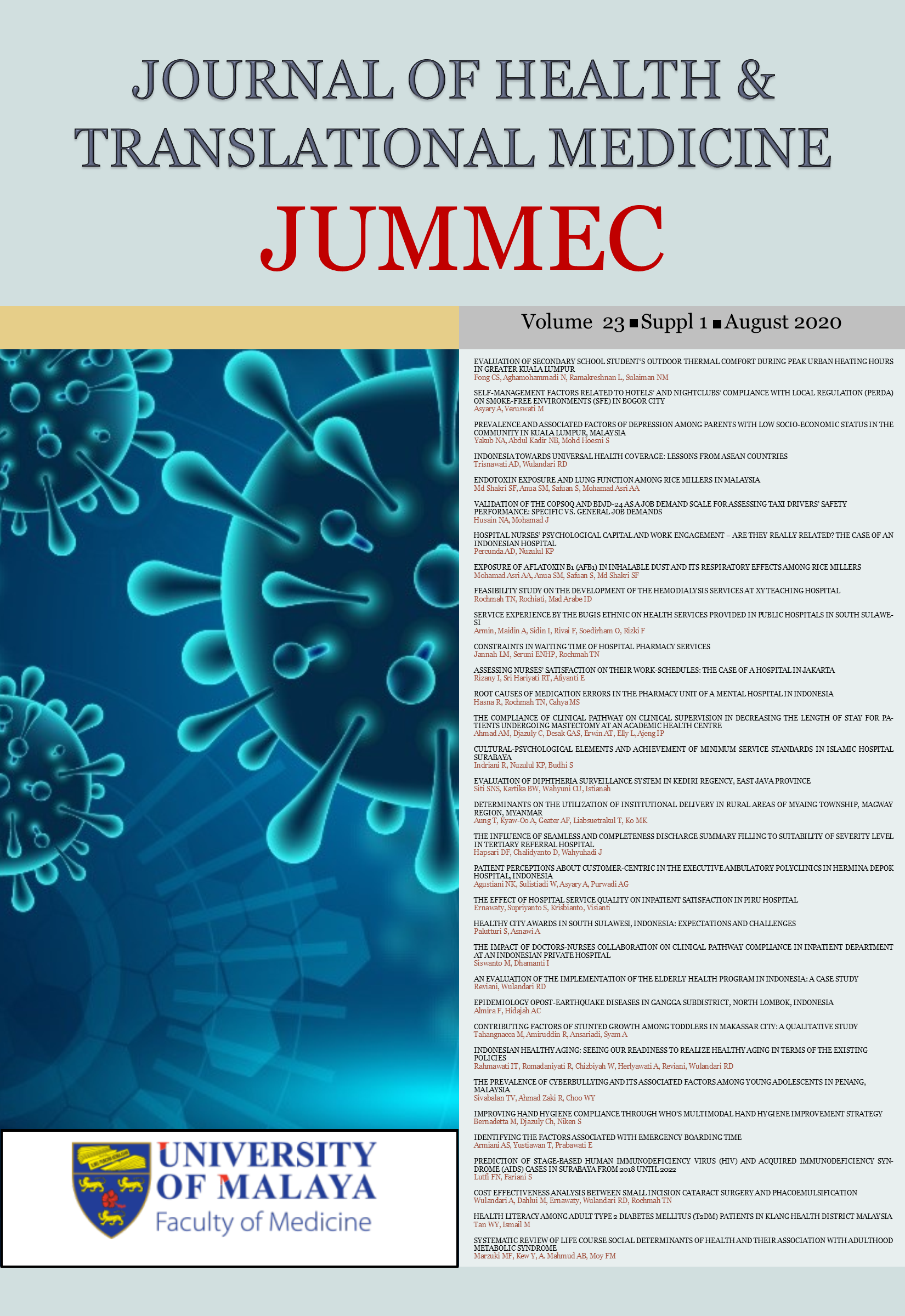THE PREVALENCE OF CYBERBULLYING AND ITS ASSOCIATED FACTORS AMONG YOUNG ADOLESCENTS IN PENANG, MALAYSIA
Keywords:
Cyberbullying, ECIPQ, Cyber-victimization, Cyber-perpetration, AdolescentAbstract
Introduction: Cyberbullying is a growing public health menace although research into the topic is very much lacking in Malaysia. This study aimed to determine the prevalence of cyberbullying among Malaysian adolescents and its association to gender, internet use pattern and offline bullying.
Methods: This study adopts a cross-sectional methodology among Malaysian adolescents’ (N=882, 13 to 14 years old) through both the dimensions of victimization and perpetration using the European Cyberbullying Intervention Project Questionnaire (ECIPQ).
Results: The result shows that if the period of the cyberbullying experience is confined to the past one month, the prevalence cyber-victimization and cyber-perpetration are 31.6% and 20.9% respectively. The prevalence however increased by more than 2-fold when it was extended to the past 3-months experience (73.7% and 64.2% respectively). Online harassment seems to dominate the prevalence of various types of cyberbullying in both cyber-victimization and cyber-perpetration dimensions (60.4% and 55.4% respectively). Both offline victims (AOR 2.40, p<0.001) and perpetrators (AOR 2.21, p<0.001), daily internet users (AOR 1.81, p<0.05), electronic gadget owners (AOR 2.44, p<0.05), social media (AOR 2.70, p<0.05) and instant messaging app users (AOR 2.37, p<0.05) have higher probability of becoming a cyber-victim. Offline perpetrators (AOR 3.05, p<0.001), daily internet users (AOR 1.81, p<0.05), social media (AOR 2.88, p<0.05) and instant messaging app users (AOR 3.00, p<0.05) have a higher probability of cyber-perpetration. There seems to be no association of age of first internet use and usage of real identity online to cyberbullying.
Conclusion: Relevant agencies must raise the alarm on the burden of cyberbullying among school going adolescent. Cyber-parenting must be emphasized as an important component of cyber education. Behavioural intervention and communication skills must integrate with online social media experiences and primarily adopted in cyberbullying prevention.
Downloads
Downloads
Published
Issue
Section
License
All authors agree that the article, if editorially accepted for publication, shall be licensed under the Creative Commons Attribution License 4.0 to allow others to freely access, copy and use research provided the author is correctly attributed, unless otherwise stated. All articles are available online without charge or other barriers to access. However, anyone wishing to reproduce large quantities of an article (250+) should inform the publisher. Any opinion expressed in the articles are those of the authors and do not reflect that of the University of Malaya, 50603 Kuala Lumpur, Malaysia.


